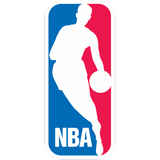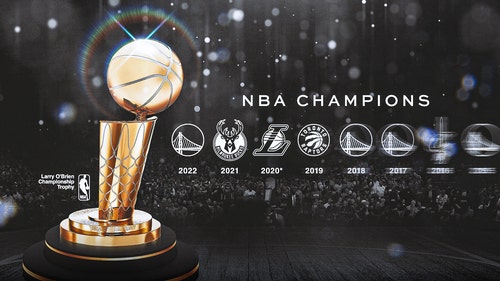
Four notes following the NBA Draft

1. Mason Plumlee is a nice get for Portland
Plumlee's stock took a huge dip with the Brooklyn Nets this year due to a combination of unfair expectations and a poor system fit. But Plumlee could find new life by moving from Lionel Hollins' post-centric system to Terry Stotts' ‘flow' offense.
Part of the reason for Plumlee's rookie success was that he was primarily cast as a pick-and-roll finisher, a role that suits the promising young big man well. In year two, Hollins (with perhaps some influence from management) tried to make Plumlee into more of a traditional big man, a decision that attributed to his underwhelming season. It's a good lesson for fans and teams because every player wants to grow and expand their game, but more often that not, a player staying in his lane and excelling at just a limited number of things on the court is better for both his career and the franchise that employs him.
With the Blazers, Plumlee will likely go back to the root of his initial success in the league. The system Stotts uses in Portland is extremely similar to the one used by Rick Carlisle in Dallas, which made an offensive star out of Tyson Chandler. Especially now that LaMarcus Aldridge is likely out and holdovers like Meyers Leonard and Chris Kamen have range that extend to at least the mid-range, Plumlee can team up with pick-and-roll point guard Damian Lillard and become Stott's version of Chandler (on offense, at least).
Plumlee isn't a great finisher – NBA.com shows he converted 58.4 percent of his shots inside the restricted area, just a hair above league average –but he possess that Chandler-like mobility to get on top of the rim quickly after screening for the ballhandler in pick-and-rolls. That has a ton of value in this league as less big men than you'd expect, given the incredible number of athletes playing today, actually have that kind of effect on a defense (by my subjective assessment, there are less than 10).
2. It's time to stop overvaluing late first round picks
During the draft, two trades really stood out to the hardcore basketball nerds: Tim Hardaway Jr. going to the Hawks for No. 19 and Greivis Vasquez moving to the Bucks for a the Clippers' lottery-protected first round pick in 2017 (that Milwaukee owns). While the Hardaway move is far less defensible unless you really value shooting and Atlanta's newfound reputation as the East's version of San Antonio, the Vasquez one should be less prone to criticism.
Vasquez isn't a world beater, but he's continually improved as a 3-point shooter, can make plays with the ball in his hands and run a team when he's in the game. In short, he's a quality NBA rotation player, something that the data suggests is hard to find in the latter stages of the first round. And if charts aren't your thing, go to NBA.com's draft history page and scroll through the past dozen drafts (I did this exact thing while working on another project and was taken aback by what a small number of players pan out to be meaningful contributors to NBA teams, especially for the franchises that actually drafted them).
While Vasquez's contract status – he's a free agent after this upcoming season – brings an element of risk to it, getting a player of Vasquez's abilities for a pick that is likely to be in the low 20s (as long as Blake Griffin and Chris Paul stay healthy in L.A.) seems more like a win for the Bucks than a Raptors team that, at least right now, is trying to remain competitive.
Given the past few years has seen first round picks be hoarded like gold because they represent the best chance to keep a player cheaper and longer than free agency, it might be time for league executives to reassess the market. I guess the question is, are the low odds of a player drafted in the late first round possibly becoming a long-term rotation cog on cheap better than finding one on solid deal who is right now?
3. No more excuses for Minnesota
Despite having the last three No. 1 overall picks on their roster following the selection of Karl Anthony-Towns, the Timberwolves reason for optimism moving forward isn't so much star-level talent as it is another valuable NBA commodity: depth.
With Anthony-Towns and Tyus Jones now in the fold, Minnesota is well-stocked at nearly every position on the roster. Their frontcourt especially is now loaded with potential rotation options offering slightly different attributes. Nikola Pekovic crushes the glass. Adrian Payne and Bennett offer potential as "stretchy" bigs. Gorgui Dieng offers length and mobility on defense while Anthony-Towns brings with him a versatile offensive game and the potential to be a solid rim-protector. To top it off, Kevin Garnett looks to be back providing some crucial guidance to a very young group.
Further down the line on the wing, Minnesota has a shooter in Chase Budinger, who rediscovered his outside stroke after a series of injuries during the latter half of the season, a veteran scorer in Kevin Martin and a well-rounded young forward in Shabazz Muhammad -- who put up some impressive numbers last year. Joining those three, of course, is Rookie of the Year, Andrew Wiggins. Manning the point guard position is passing wizard Ricky Rubio, who now has two understudies in Zach LaVine and Jones to help keep the team afloat should injuries continue to mar his contributions.
With so many young players, there will still be some growing pains, especially on defense, but this Minnesota squad has some serious upside and depth. If Flip Saunders the coach, can pull the right strings on the sidelines, they might shock the West next season.
4. Like a glove
While it's easy to get caught up in the idea that these young prospects carry are the ones affecting the path of the franchise that selects them, the truth is that it's usually the other way around. A good organization can help put a player on a path to success just as a bad one can doom him to dread bust status. Last night, three prospects found themselves going into great situations.
- Frank Kaminsky to Charlotte
Despite their woeful record last season, the Hornets have enough pieces in the fold to quickly find themselves back in the playoffs, and not just because they reside in the Eastern Conference. Veteran holdovers like Al Jefferson, Kemba Walker, Michael Kidd-Gilchrist (not really a true vet, but still) and the newly acquired Nic Batum all have flaws in their games, but provide real value to NBA teams. They also provide a solid support structure both on and off the court for Kaminsky to slowly find his niche in the NBA -- which should be along the lines of a Channing Frye-type of player.
Had Kaminsky going somewhere else, like the Knicks, where he'd be asked to shoulder more of a burden than he's ready for -- or ever equipped to handle -- it could have been a disaster for a guy that seems much more suited to a complementary role in the NBA. With Charlotte, Kaminsky, who may not even face pressure to start with the likes of Jefferson and Cody Zeller around, will just be asked to come in and make shots while playing off the other proven NBA scorers around him. In a sense, it will give us far more of a chance to see what Kaminsky is, rather than what he is not. And being put in that position on his first team may change the entire trajectory of the big man's career.
- Justise Winslow to Miami
Since others have already written about the potential behind this union, I won't go into too much detail. But Winslow is another player that analytics models didn't really love who may have struggled if thrust into a large immediately. With the Heat, especially if Dwyane Wade and Luol Deng return, Winslow will likely just be asked to defend his ass off and outwork teams in transition.
Having other veteran talent limiting the role of player like Winslow, he at 19 is still an unmolded piece of basketball clay, can have a very powerful effect. Just ask Kawhi Leonard. Part of Leonard's rise with the Spurs was that his game was allowed to mature slowly, earning more and more offensive responsibility year by year instead of just having carte blanche to do whatever he wants on team devoid of other scoring options – the exact recipe for bad habits and poor perception to be created. Winslow has instead found himself in a successful organization with the pieces and pedigree to put him on a similar track as Leonard was with the Spurs, something that should only benefit his game in the long term.
- Kevon Looney to Golden State
A raw, but versatile player with some health issues is almost doomed to failure on the vast majority of teams around the league. But by sliding all the way to the end of the first round on draft night, Looney has found himself in the perfect situation.
For starters, the Warriors performance staff was responsible for the team having the least number of games lost due to injury in the NBA last season. Partly because of the gambles (or at least what looked like gambles at the time) Golden State took on Steph Curry and Andrew Bogut – two players with chronic injury problems – they made it a priority to invest in areas that affected their players health. It looks like that investment has paid off as the Warriors performance staff seems ready to challenge the vaunted Suns staff for injury prevention supremacy. So for a player with Looney's medical issues, stepping into a franchise with this type of competency from and support in their performance staff is ideal.
As far as the basketball side goes, Looney playing for the recently crowned world champs means he'll be asked to develop into a role, honing certain skills that complement other players instead of servicing himself. And on top of that, their Warriors incredible depth – assuming their offseason doesn't seen their roster ravaged by departures – means Looney will have time, whether it's with the NBA staff or the team's D-League affiliate, to shore up glaring holes in his game without the weight of massive expectations destroying his confidence. So while Looney may have found his wait on draft night disappointing, it certainly seems worth it.
More from RealGM - NBA:








